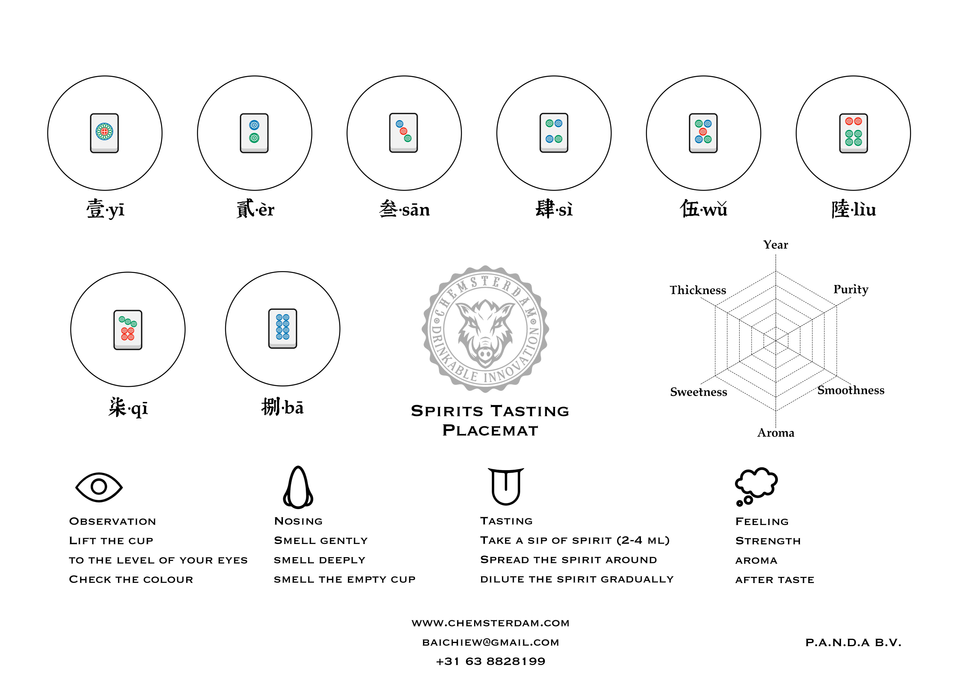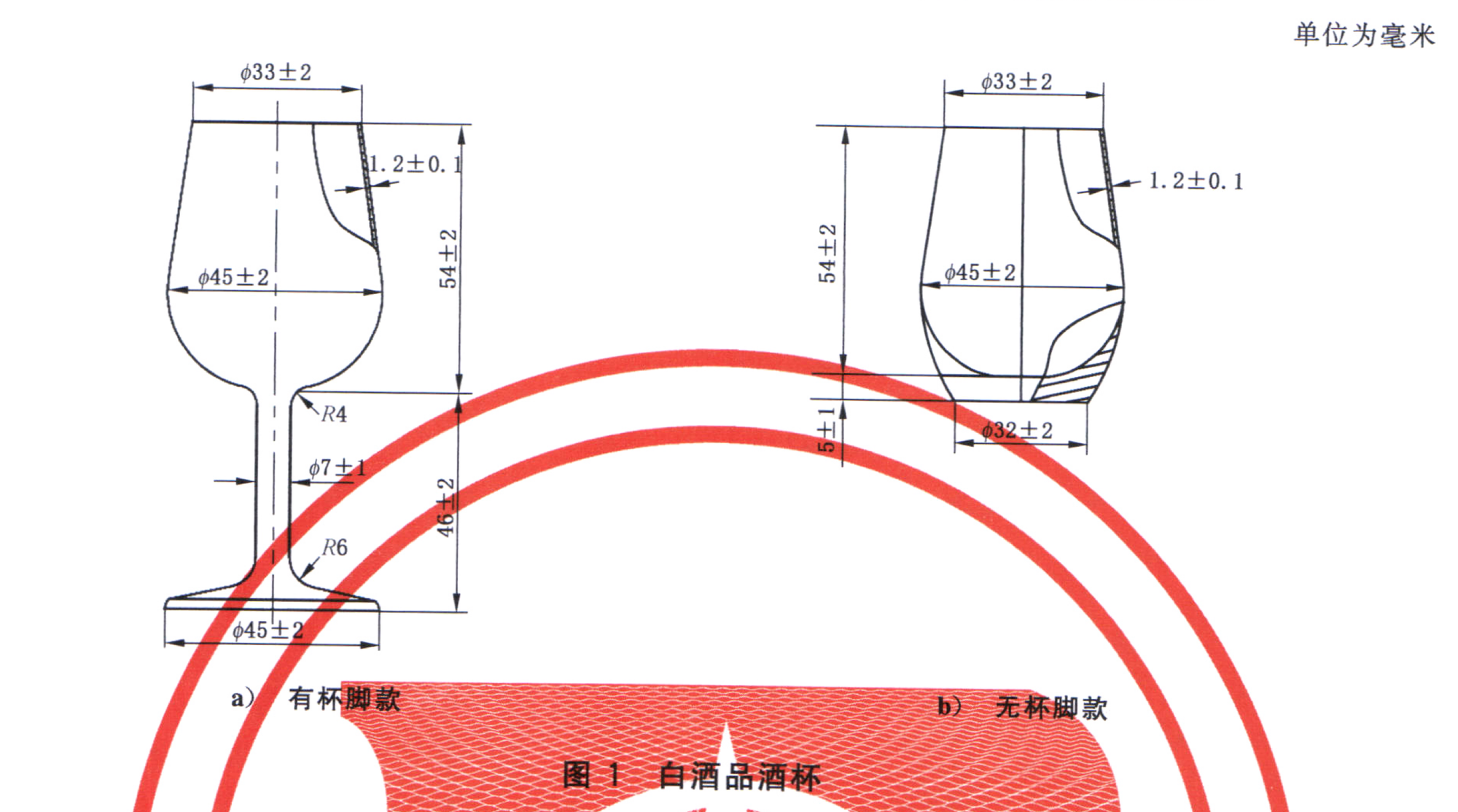How to taste Baijiu?

This Brief Baijiu Tasting Guide Line is made by the
The brewing techniques of Baijiu ensure a high complexity of aromatic components contained within, and it is necessary to maintain an alcohol content of 52% ABV to ensure the fullness of flavor. Therefore, the first experience of drinking Baijiu can be quite intense. However, this sharp sensation can be mitigated through certain techniques, allowing you to fully appreciate the exquisite flavors of Baijiu.
Tasting Cup

The standard Baijiu tasting glasses, as shown above, come in two styles: type A with a stem and type B without a stem. Both types are made of colorless transparent glass. The full capacity of these glasses is 50-55 ml, while the capacity at the maximum liquid level is 15-20 ml. If possible, capacity markings and maximum liquid level scales can be added to the glass wall.
If you don't have standard Chinese Baijiu Tasting Cup, the tulip cup for tasting is also good enough to do the tasting. The golden rules are:
- No matter what kind of tasting cup you use for tasting, for all the different samples, you should use the same type of cups with same amount of spirits;
- It is always good to have clear glass cups for the inspection.
- Actually, any glass with a larger bowl and a smaller opening is suitable for tasting spirits, and it is best if the capacity is between 40-60 ml.
- For tasting, the amount of liquor used should be based on achieving the maximum surface area of the liquor within the glass.
Tasting Temperature
The best tasting environment temperature is 20-25 Celsius Degrees. It is the best keep the tasting sample in the tasting environment more than 20min before tasting.
Tasting
Appearance
Lift the glass and use a white tasting table or white paper as a background. Observe the liquor through direct, overhead, and upward views to check for color and its intensity. Then gently swirl the glass to observe the clarity of the liquor, checking for any suspended particles or sediment.
Aroma
1. For general sniffing, first lift the glass and position it approximately 10mm to 20mm below the nose at a 30° angle, slightly tilt your head down, and inhale slowly and evenly to smell the static aroma. During sniffing, only inhale through the nose without exhaling. Then gently swirl the glass to increase the evaporation of the aroma and smell again.
2. In special cases, pour out the liquor, leave the glass empty for a while, and then sniff to assess the residual aroma left in the glass.
Taste and Texture
1. Each sip should be consistent, generally between 0.5mL and 2.0mL, which can be adjusted based on the alcohol content and personal preference.
2. During tasting, let the tip and sides of the tongue contact the liquor first. By moving the tongue, spread the liquor across the surface of the tongue and the base, as well as ensure it fully contacts the inner walls of the mouth. The liquor should ideally stay in the mouth for about 3 to 5 seconds. Carefully feel the quality of the liquor and note the taste and texture characteristics at each stage.
3. Finally, you may either swallow or spit out the liquor, then slowly open your mouth and inhale, allowing the aroma of the liquor to exit through the nose to assess the aftertaste.
4. Typically, taste each glass about 2 to 3 times. After evaluating one glass, rinse your mouth with water, take a short break, then proceed to evaluate another glass.

Let's toast to the world
1. China (Mandarin) - 干杯 (Gānbēi)
2. India (Hindi) - चियर्स (Cheers)
3. Iran (Persian) - به سلامتی (Be salâmati)
4. Turkey (Turkish) - Şerefe
5. Greece (Greek) - Γεια μας (Yia mas)
6. Italy (Italian) - Cin cin or Salute
7. Uzbekistan (Uzbek) - Olqish
8. Kyrgyzstan (Kyrgyz) - Ачык ден соолук (Achyk den sooluk)
9. Kazakhstan (Kazakh) - Асығыс көлік (Asyghys kölik)
10. Turkmenistan (Turkmen) - Saglyk
11. Azerbaijan (Azerbaijani) - Nuş olsun
12. Syria (Arabic) - في صحتكم (Fi ṣiḥṭikum)
13. Russia (Russian) - За здоровье (Za zdorovye)
14. Germany (German) - Prost
15. France (French) - Santé
16. Spain (Spanish) - Salud
17. Portugal (Portuguese) - Saúde
18. Denmark (Danish) - Skål
19. Sweden (Swedish) - Skål
20. Norway (Norwegian) - Skål
21. Finland (Finnish) - Kippis
22. Iceland (Icelandic) - Skál
